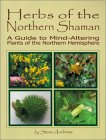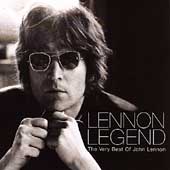| Modern Shamans
Aldous Huxley – Its widely known that Huxley experimented with
psychedelics including mescaline and LSD. In fact he died tripping
on acid (intentionally). His great works of fiction include Brave New World
about test-tube babies, consumerism and Soma, the drug of choice.
 Doors of Perception and Heaven and Hell by Aldous Huxley. A classic of psychedelic literature. Based on Huxley’s experiences with mescaline and how it opened the doors. Yes, the Doors named their group after this book. Doors of Perception and Heaven and Hell by Aldous Huxley. A classic of psychedelic literature. Based on Huxley’s experiences with mescaline and how it opened the doors. Yes, the Doors named their group after this book. |
Timothy Leary – The high priest
of LSD, Leary is clearly the King of Shamans. His role as professor
at Harvard University soon took a back seat to his public persona once
he discovered for himself the powerful insights available through psychedelics.
Unable to restrain his enthusiasm, Harvard dismissed him, allowing Leary
to experiment with psychedelics under his own terms. Once freed of
clinical restraints, Leary determined which factors enhanced and promoted
good trips. Leary was quick to realize that the LSD trip was a
religious experience that transformed the tripper for life. He encouraged
clergy, scientists, artists and many others to experiment with LSD and
recorded their experiences. His legendary sessions in Millbrook,
N.Y. yielded much data, but more importantly pioneered the personal and
interpersonal psychedelic experience as never before.
Leary became the focus of public and private debate about the use of
drugs, leading to the criminalization of LSD and other psychedelics.
Leary himself became the target of governmental repression, with Richard
Nixon calling him the most dangerous man in America. Imprisoned,
escaped, on-the-lam, returned from exile, Leary remained unfazed in his
efforts to promote the psychedelic, shamanic experience. His numerous
books exhort the reader to discover for himself the mind expanding potential
of psychedelics.
 The The
Politics of EcstasyIn this book, Timothy Leary, the high priest of LSD, promotes the right to expand one’s mind as he exhorts us to turn on, tune in and drop out! He questions the government’s growing power
to prevent individual experimentation with psychedelics. Includes the famous 1966 Playboy interview where he discusses LSD and sex.
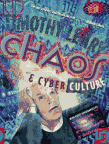 Chaos and Cyberculture the LSD guru has a lot to say about society, culture, Chaos and Cyberculture the LSD guru has a lot to say about society, culture,
technology and the human mind. This book offers up thirty years of
Leary’s experience and knowledge. A good retrospective and introduction
to his work.
|
John Lennon – While John Lennon might have considered himself
foremost an artist and musician, he nevertheless met the criteria of a
shaman in today’s society. His great influence among young people
was due to his expressive nature. His experiences with psychedelics,
particularly LSD, changed his view of the world and the way he expressed
himself through his music. Not only did he become more experimental
and inventive, but his lyrics took on an otherworldly nature. His
songs inspired countless thousands to open their minds and experiment with
psychedelics. Some of his tunes were actually composed and recorded
under the influence of LSD. John was a tireless promoter of the shamanic
message of peace, love and understanding. His message reached the
far corners of the planet.
Carlos Castaneda – Steeped in the shamanic tradition of the Nahuatl
indians of Mexico, Castaneda weaves a tale of initiation, revelation, power
and transcendence in his series of books. The story of how Carlos
meets and accepts his apprenticeship under the tutelage of brujo Don Juan
is a masterpiece. The endless debate about whether it’s a work of
fact or fiction is notwithstanding. The teachings underlying the work have
great merit, as they give meaning to existence and provide a path, the
warrior’s, for those souls brave enough to confront their own weaknesses
and transform themselves.
Terence McKenna –
At the time of this writing, Terence McKenna lies in a hospital bed awaiting
his final destiny. He is a man who, like Gordon Wasson, lived with
the natives and learned their shamanistic ways. Along with his brother,
they added much to our knowledge of ethnobotany, the native uses of psychedelic
plants. McKenna’s book, Food of the Gods, was a landmark in this
field.
 Food of the Gods : The Search for the Original Tree of Knowledge : A Radical History of Plants, Drugs, and Human Evolution – by Terence McKenna. Food of the Gods : The Search for the Original Tree of Knowledge : A Radical History of Plants, Drugs, and Human Evolution – by Terence McKenna.
Terence McKenna was the guru of botanical psychoactives. His shamanic approach to plants and human consciousness enhances our connection to the world beyond the five senses. If you’re into expanding your awareness via plants this will help put it all in context.
 True Hallucinations : Being an Account of the Author’s Extraordinary Adventures True Hallucinations : Being an Account of the Author’s Extraordinary Adventures
in the Devil’s Paradise – by Terence McKenna
|
Jim Morrison – Jim was an iconoclast who used his fame to get
his message across. A poet and philosopher, Jim felt it necessary
to push the envelope and society as far as you could to find freedom.
He knew that drugs were just Doors to other worlds where few explorers
ventured. His music, his lyrics and his passion took us to some dark places
in our personal and collective psyches. Like any good shaman, Jim’s
real talent was taking us along on his journeys into these forbidden realms
and opening our minds with his vivid perceptions.
 Break on Through : The Life and Death of Jim Morrison. Biography of this poet, philosopher, iconoclast, musician. Break on Through : The Life and Death of Jim Morrison. Biography of this poet, philosopher, iconoclast, musician.
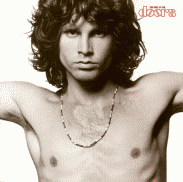 The Best of the Doors – Jim Morrison still lives on as a rock icon. The Best of the Doors – Jim Morrison still lives on as a rock icon.
His sensuous voice, defiant attitude and iconoclastic lyrics along with Ray Manzarek’s great keyboard work propelled the Doors to the top of the charts. This two disk set contains the Doors biggest hits including Light My Fire, Riders on the Storm and L.A. Woman.
|
Alexander & Ann Shulgin – This husband and wife team have explored the whole range of psychedelic drugs including some that few if any have tried. They are known as the parents of Ecstacy.
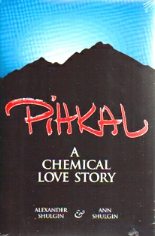 Pihkal Pihkal
: A Chemical Love Story by Alexander Shulgin.
Pihkal stands for Phenethylamines I Have Known and Loved. Indeed,
the Shulgins know of what they speak and they tell the story of psychedelics
and designer drugs including their child, Ecstacy. If you’re a talented
chemist you might appreciate the 179 recipes included. Tihkal is
their book about Triptamines. |
Ken Kesey – In contrast to Timothy Leary’s experimental approach
to psychedelics, Kesey explored the experiential. Along with his
Merry Pranksters, Kesey felt that psychedelics were a new way to experience
the world. Inviting diverse friends from Allen Ginsberg to the Hell’s
Angels to his place in La Honda he was able to transform groups of people
via the communal trip. After turning on hundreds, he decided to
take his show on the road in a day-glo bus. Kesey and the Pranksters
went on a psychedelic cross country trip that inspired many including
the Beatles (Magical Mystery Tour) to try to duplicate. The famous
Acid-Test parties where LSD laced Kool-Aid was dispensed accompanied by
music (by such notables as the Grateful Dead) and light shows were modern
day correlates to the shamanic rituals of old.
 The The
Electric Kool Aid Acid Test – Tom WolfeTom Wolfe’s book about Ken Kesey and the Merry
Pranksters. One of the great books about how LSD invaded America’s consciousness,
peaking during the Summer of Love. A tribute to Kesey, the Pranksters (including
Neal Cassady, Ken Babbs, Mountain Girl and Wavy Gravy), and the whole psychedelic
generation. Good insight into how the torch was passed from the Beats to
the hippies. It also contrasts Kesey’s up front, experiential movement
versus Timothy Leary’s experimental, insightful approach to the LSD trip. |
|
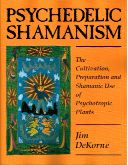 Psychedelic
Psychedelic